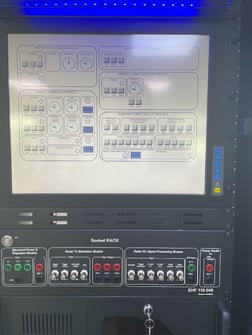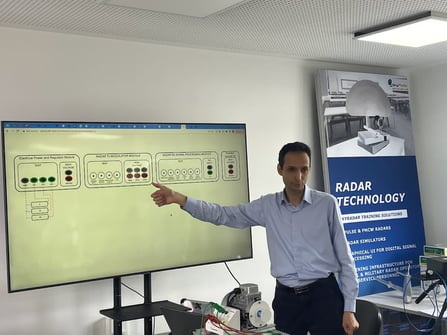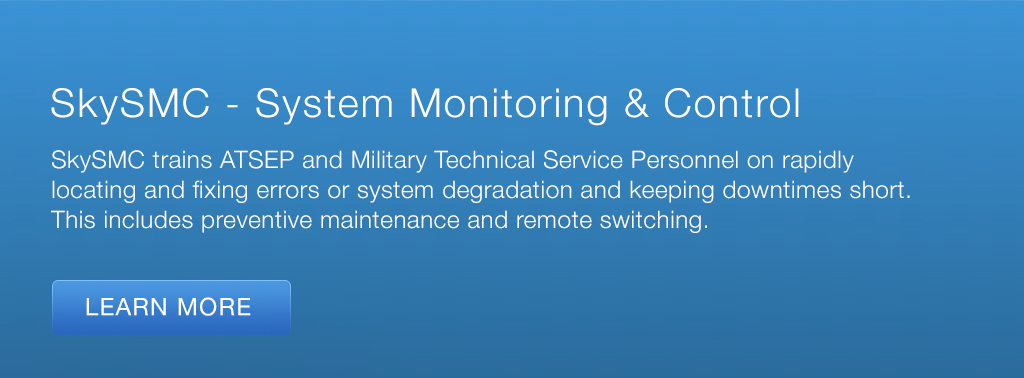Air Traffic Control (ATC) is an essential element of the aviation industry, ensuring the safety and efficiency of aircraft movements. ATC is responsible for managing airspace, directing aircraft movements, and providing critical information to pilots. The smooth functioning of ATC heavily relies on reliable and accurate communication systems. However, various factors can lead to errors in the communication systems, including power source errors. In this article, we will explore the impact of power source errors due to sensitivity in ATC.
Definition of Power Source Errors due to Sensitivity
Power source errors due to sensitivity refer to a type of error that can occur in electronic devices when there is a problem with the power source, and the device is unable to function correctly due to sensitivity to variations in the power supply.
In some cases, the power supply may not provide the device with the required voltage or current, causing it to malfunction. Alternatively, the device may be overly sensitive to small variations in the power supply, leading to erratic behavior or performance issues.
Power source errors due to sensitivity can occur in various electronic devices, including computer systems, communication equipment, and industrial control systems. These errors can lead to system failures, data corruption, and downtime, resulting in lost productivity, increased costs, and potential safety hazards.
To prevent power source errors due to sensitivity, it is essential to use high-quality power supplies that provide stable and reliable voltage and current. It is also important to ensure that electronic devices are designed to be tolerant of variations in the power supply and that they have appropriate power conditioning and filtering mechanisms in place. Regular maintenance and testing can help to identify and address any power source errors before they cause significant problems.
What is Sensitivity?
Sensitivity refers to the ability of the communication and navigation equipment to receive and transmit signals accurately. In ATC, sensitivity is crucial as any errors in the signal transmission can lead to miscommunication between pilots and controllers, increasing the risk of accidents. Sensitivity also plays a critical role in ensuring the accuracy of navigation systems, which are essential for maintaining the required separation between aircraft.
For example, a VOR (VHF omnidirectional range) navigation system works by transmitting radio signals from a ground station. The receiver on the aircraft then detects the signals and determines the aircraft's location relative to the station. If the receiver is not sensitive enough, it may not detect the signals accurately, leading to errors in the aircraft's position. These errors can be dangerous, particularly in low visibility conditions.
Scenario Illustrating the Impact of Power source Error related to Sensitivity on ATC
Here are two pedagogical scenarios that illustrate the impact of power source errors related to sensitivity on air traffic control services
Scenario 1:
Close your eyes and envision yourself in the shoes of an air traffic controller, stationed in a bustling control center. The room is filled with a symphony of blinking lights, glowing screens, and the low hum of activity. You sit at your console, a master conductor in this intricate ballet of aircraft movements.With utmost focus, you survey the radar display, your eyes darting from blip to blip. The radar sensitivity is finely tuned, allowing you to capture even the slightest changes in aircraft positions, ensuring the safety and efficiency of their routes. The blips move gracefully across the screen, like well-choreographed dancers, following the paths you've carefully orchestrated.
Suddenly, as if a mischievous hand has flicked a switch, the power source supplying the control center stumbles. The room plunges into a momentary darkness before emergency lighting kicks in, casting an eerie glow on your surroundings. The screens flicker back to life, but something is amiss.The radar blips, once crisp and clear, now appear faint and ghostly. The delicately balanced sensitivity of the system has been thrown off-kilter. The blips blur together, overlapping and blending into a chaotic swirl of indistinguishable blurs. It's as if the once graceful dancers have lost their rhythm, stumbling and colliding in the darkness.
You feel a knot tighten in your stomach as you realize the implications. Without accurate and reliable radar data, your ability to maintain separation between aircraft and guide them safely through the airspace is compromised. Panic threatens to take hold, but you push it aside, drawing on your training and experience.
The communication channels, too, bear the brunt of the power source error. Static crackles through the speakers, distorting the pilots' voices. Important instructions become muffled and unintelligible, like a distant radio transmission from another era. The once clear and concise dialogue between you and the pilots now resembles a cryptic code that must be deciphered.
Scenario 2:
Imagine yourself as an air traffic controller once again, overseeing the flow of aircraft in a busy airspace. Your control center hums with activity as you monitor the radar display and communicate with pilots, ensuring smooth and orderly operations.Today, the control center relies on a highly sensitive power source that supplies the radar systems with a stable and precise electrical current. The sensitivity of the power source is crucial for accurately detecting and tracking aircraft movements, enabling you to make split-second decisions to maintain safe distances between planes.However, fate has a different plan for this day. Without warning, a power surge disrupts the delicate balance of the control center. Lights flicker, screens go dark, and the control room is momentarily engulfed in a silent darkness. Emergency lights illuminate the room, casting eerie shadows on the equipment.
As the systems reboot, you notice an unexpected consequence of the power surge. The radar sensitivity has been altered, but not in the way you anticipated. Instead of becoming less sensitive, the power surge has elevated the sensitivity of the radar systems to an extreme level.The radar display comes alive with a barrage of blips. It's as if every bird, weather phenomenon, and distant object within a hundred miles is now registered on the screen. The once-clear display is now cluttered with an overwhelming amount of information. Blips dance across the screen in a frenzied frenzy, making it nearly impossible to distinguish actual aircraft from false echoes.Your heart races as you realize the magnitude of the situation. The heightened sensitivity of the radar system has transformed the airspace into a chaotic playground of blips, distorting the true picture of aircraft positions. It becomes a puzzle to decipher the real threats from the countless false targets that populate the screen. Communication with pilots also becomes challenging. The increased sensitivity amplifies the radio transmissions, causing even the faintest whispers to resonate like booming thunder. The once-precise instructions you provide are now distorted, making it difficult for pilots to understand your commands and intentions.
Impact of power source Errors related to Sensitivity on ATC
Power source errors related to sensitivity can have a significant impact on air traffic control services. Sensitivity refers to the ability of the receiver to detect and interpret weak signals from aircraft transponders. If the power source supplying the receiver is faulty, it can result in a loss of sensitivity, which can cause critical information to be missed or misinterpreted.
For example, imagine an air traffic controller trying to track a small aircraft flying in an area with poor radar coverage. If the receiver is not sufficiently sensitive due to power source errors, the controller may not be able to detect the aircraft's transponder signal, leading to a loss of situational awareness and potentially putting other aircraft at risk.
In another scenario, a power source error related to sensitivity could cause a false reading, indicating that an aircraft is further away or closer than it actually is. This can lead to incorrect instructions being given to pilots, potentially causing confusion and increasing the risk of a collision.
Steps to be taken by ATSEP in Rectification of Power Source Errors related to Sensitivity
When an Air Traffic Systems Engineering Personnel (ATSEP) encounters power source errors related to sensitivity in a radar system, the following steps can be taken to rectify the issue
Identify the Problem
The ATSEP needs to identify and confirm that the issue is indeed related to power source errors affecting the sensitivity of the radar system. This can be done by conducting a thorough assessment of the system, examining power supply connections, and performing diagnostic tests.
Document and Report
The ATSEP should document and report the power source error to the appropriate personnel, such as the maintenance team or supervisor. This step is crucial for tracking and initiating the rectification process.
Isolate the Faulty Power Source
The ATSEP should identify the specific power source or component that is causing the sensitivity issues. This may involve checking power cables, connectors, voltage levels, and any associated equipment or systems.
Perform Power Source Maintenance or Replacement
If the power source is determined to be faulty, the ATSEP should perform the necessary maintenance procedures or replace the faulty power source. This can include activities such as repairing electrical connections, replacing damaged cables, or installing a new power supply unit.
Verify Power Source Stability
After rectifying the power source error, the ATSEP should verify the stability of the power supply. This can be done by monitoring voltage levels, conducting performance tests, and ensuring that the power source is functioning reliably.
Conduct Sensitivity Testing
Once the power source has been rectified and stabilized, the ATSEP should conduct sensitivity testing on the radar system. This involves assessing the system's ability to detect and accurately process weak incoming signals from aircraft. The sensitivity testing should validate that the power source rectification has resolved the sensitivity issues.
Monitor and Fine-tune
After the sensitivity testing, the ATSEP should closely monitor the radar system's performance and make any necessary fine-tuning adjustments to ensure optimal sensitivity and power source stability. This may involve further calibration or configuration of the system as needed.
Document the Rectification Process
The ATSEP should document the entire rectification process, including the identified power source errors, maintenance or replacement procedures performed, sensitivity testing results, and any adjustments made. This documentation serves as a reference for future troubleshooting or maintenance activities.
Conduct System Integration Testing
Once the radar system's power source error related to sensitivity has been rectified, it is essential to conduct system integration testing. This ensures that the radar system operates seamlessly within the larger air traffic control infrastructure and that all interconnected systems and components are functioning correctly.
Communicate the Rectification
The ATSEP should communicate the rectification of the power source error and the restored sensitivity to relevant stakeholders, such as air traffic controllers or supervisors. This ensures that the updated system status is known, and air traffic control operations can resume normally.
By following these steps, ATSEPs can effectively rectify power source errors related to sensitivity in radar systems, ensuring optimal performance and reliability for air traffic control services.
Steps to be followed by ATSEP for Preventing Sensitivity related Power Source Errors
Regular Maintenance
Regular maintenance of the power supply equipment is essential to ensure that it is functioning correctly. ATSEP should conduct routine inspections of electrical cabinets and power sources to identify any signs of wear and tear.
Use of High-Quality Equipment
The use of high-quality equipment can help prevent sensitivity-related power source errors. ATSEP should use equipment that is designed to withstand the high demands of the ATC environment.
Adequate Training
Adequate training of ATSEP personnel is essential to prevent power source errors. ATSEP should be trained on the proper installation, operation, and maintenance of power supply equipment.
Implementation of Redundancy
Implementation of redundancy in the power supply system can prevent sensitivity-related power source errors. ATSEP should install backup power supply systems to ensure that the ATC systems remain operational in the event of a power source failure.
Regular Testing
Regular testing of power supply equipment can help identify any potential issues before they become a problem. ATSEP should conduct routine tests of electrical cabinets and power supplies to ensure that they are functioning correctly.
Factors Responsible for Sensitivity related Power Source Errors
Environmental Factors
Environmental factors such as temperature, humidity, and dust can cause sensitivity-related power source errors.
Equipment Age
The age of the equipment can also be a factor in sensitivity-related power source errors. As the equipment gets older, it becomes more susceptible to failure.
Overloading
Overloading of power supply equipment can cause sensitivity-related power source errors. When the equipment is overloaded, it may not be able to supply the required power, leading to a failure.
Improper Installation
Improper installation of power supply equipment can also cause sensitivity-related power source errors. The equipment must be installed correctly to ensure that it is functioning correctly.
Lack of Maintenance
Lack of maintenance is also a factor in sensitivity-related power source errors. The equipment must be maintained regularly to ensure that it is functioning correctly.
Some Common Types of Power Source Issues Caused by Sensitivity Errors
Power source issues caused by sensitivity errors can lead to various problems in electrical systems. Here are some common types of power source issues caused by sensitivity errors
Voltage Fluctuations
Sensitivity errors in power source monitoring or voltage regulation systems can result in voltage fluctuations. This can lead to inconsistent power supply to connected devices, causing instability, malfunctions, or even damage to sensitive equipment.
Overvoltage or Undervoltage
Sensitivity errors in voltage regulation can result in overvoltage or undervoltage conditions. Overvoltage can exceed the safe operating limits of devices, causing them to fail or sustain damage. Undervoltage can lead to inadequate power supply, affecting device functionality and potentially leading to unexpected shutdowns or errors.
Frequency Instability
Power sources with sensitivity errors may exhibit frequency instability, resulting in variations in the electrical frequency supplied. This can impact the performance of devices that rely on specific frequencies, such as motors, clocks, or communication systems, leading to errors or malfunctions.
Harmonic Distortion
Sensitivity errors can contribute to harmonic distortion in the power supply. Harmonics are additional frequencies that can distort the sine wave of the power signal. Excessive harmonic distortion can interfere with the operation of sensitive devices, leading to performance issues or equipment damage.
Power Surges or Transients
Sensitivity errors in power regulation systems can lead to power surges or transients—brief, sudden increases in voltage levels. These surges can cause immediate damage to connected devices, particularly those with sensitive electronic components like integrated circuits.
Power Factor Issues
Sensitivity errors can affect the power factor of electrical systems. Power factor is a measure of how efficiently electrical power is being utilized. Errors in power factor correction can result in poor power factor, leading to increased energy consumption, reduced system efficiency, and potential penalties from utility providers.
Grounding Problems
Sensitivity errors can also contribute to grounding problems. Inadequate or faulty grounding can result in electrical noise, safety hazards, and interference with sensitive equipment. Grounding errors can cause incorrect voltage readings, improper circuit operation, or even pose a risk of electrical shock.
SkyRadar's System Monitoring & Control Solution
SkySMC - SkyRadar’s System Monitoring and Control Suite is a pedagogically enhanced, fully operational monitoring & control tool. It has been designed to practice these use cases. We have optimized it to host ATSEP training in SUR, NAV, COM, DPR and SMC compliant to EASA's Easy Access Rules for ATM-ANS (Regulation (EU) 2017/373) and ICAO Doc 10057.
SkyRadar provides SkySMC as a complete laboratory in a turn-key approach, or as a virtual infrastructure (for purchase or as a service).
SkySMC is not a simulator, but a fully operational open monitoring system. It comes by default with a server including various virtualized applications and virtualized servers, but also connects to simulated systems. In addition, there are various hardware extensions available including training infrastructures, monitorable training radars, or even complete ATM systems, all connected to the System Monitoring & Control solution. Most components such as the radars, it IT infrastructure or networks exist in hardware and software (virtualized or simulated).
The two photos above show the same trouble-shooting panel and socket rack in real hardware and in the simulator (fully functioning).
SkyRadar's System Monitoring & Control training system can be easily blended into distance learning solutions and existing learning management systems.
Let's talk
Stay tuned to be always the first to learn about new use cases and training solutions in ATSEP qualification (real radars or simulators).
Or simply talk to us to discuss your training solution.
References
- International Civil Aviation Organization. (2016). Air Traffic Services Planning Manual. Retrieved from https://www.icao.int/Meetings/anconf12/Documents/WP/wp168_en.pdf
- The MITRE Corporation. (2021). Air Traffic Control. Retrieved from https://www.mitre.org/capabilities/aviation/air-traffic-control
- United States Department of Transportation. (2021). Air Traffic Control System Command Center. Retrieved from https://www.fly.faa.gov/faq/atcccfaq.jsp
- Zhang, X. (2018). Challenges and opportunities for air traffic control in the future. Journal of Air Transportation, 26(1), 1-2. doi: 10.2514/1.D0081
- Zhang, X. (2020). Advanced air traffic control technologies for the future. International Journal of Aerospace Engineering, 2020, 1-3. doi: 10.1155/2020/8652650






